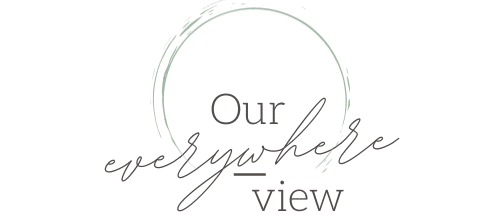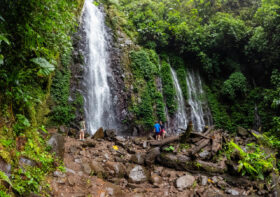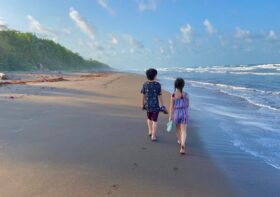Around Iceland’s Ring Road in 2 weeks: Part III
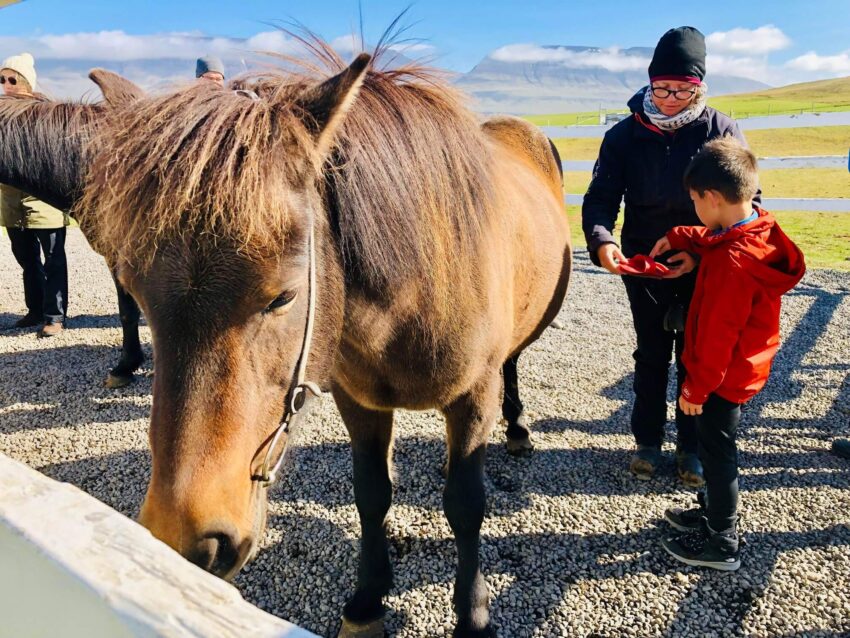
Waterfalls, beaches, mountains, hot springs, volcanos, and more. Iceland, the Land of Fire and Ice, is nature at its best and the adventure of a lifetime. Our two week itinerary of Iceland took us around the Ring Road at an easy, comfortable pace – perfect for traveling with kids, and plenty of time to hike, swim, and take it all in.
Duration: 14 days
Traveled as: a family (two kids ages 5 and 7) with friends (another couple with two similar aged kids)
Type of travel: pleasure
Combined with other destinations: no
::Our two week Iceland Itinerary::
Make sure to check out Part I and Part II for our first week in Iceland, where we explored the Golden Circle and Iceland’s south and east coasts!
Our next leg of our adventure takes us along the Ring Road across Iceland’s wild north and beautiful northwest.
Day 7 – Destination Husavik, “Diamond Circle”
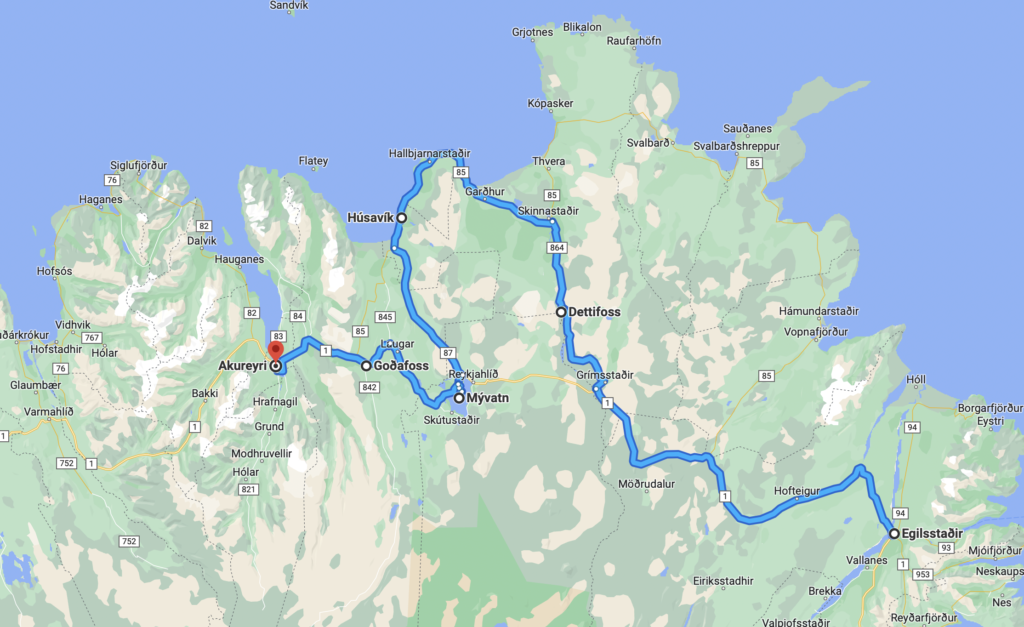
Most people have heard of Iceland’s Golden Circle. Not many know the “Diamond Circle” of Iceland’s north. This route includes the area around Lake Myvatn along the Ring Road, and circles up to Dettifoss and Husavik. Coming in from Egilsstadir, we drove up the “east arm” of the circle first, past Dettifoss.
Driving from Egilsstadir toward Husavik through Dettifoss takes around 3.5 hours. This was probably the single longest stretch of driving we did our entire trip. We had booked a whale watching tour in Husavik for 3pm, and wanted to make sure we got there with time to spare.
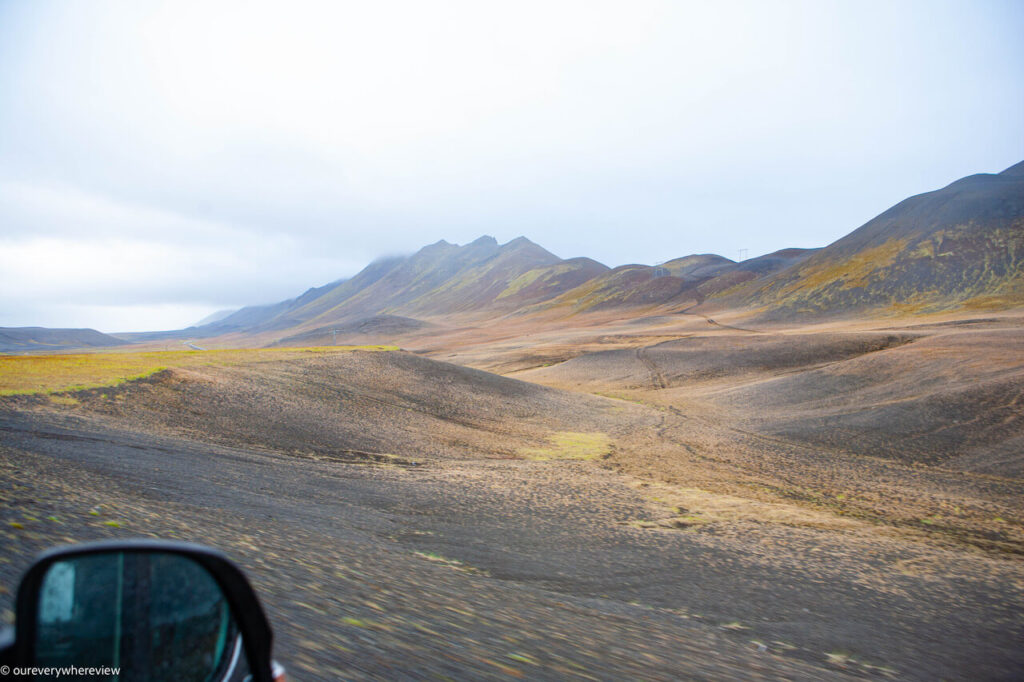
This stretch of the country is wild and desolate. The main attraction we skipped in this region is Studlagil, a gorgeous basalt columned canyon with a very distinctive blue-green river in most photos. This canyon became a tourist attraction in 2009, after a new hydroelectric plant diverted most of the water and made the canyon accessible and safe for visitors. I really wanted to stop here, but we ultimately opted to skip it. The round-trip hike to the canyon is a whopping 10km, which was a little too much for little legs. The colour of the water also changes depending on when you visit. It’s only that blue-green colour from May-July, then turns brown with dam overflow and glacial melt.
Dettifoss
We did make a stop at Dettifoss, the second most powerful falls in Europe (after the Rhine Falls).
In part II of our itinerary we wrote about route 939, and how Google Maps misled us across a pass that could have been quite dangerous (but beautiful). We ran into another such road (and again failed to realize there was an alternative until after the fact) on our way to Dettifoss. Coming from Egilsstadir, Google Map will direct you down 864. This is not marked as an F road, but is around 40km of bumpy gravel road. We recommend reaching Dettifoss from the parallel 862, which is semi-paved and a much easier drive (the legit “Diamond Circle” route). Unlike 939, 864 is not a particularly scenic road.
There is a short, rocky hike from the carpark to the falls. Unfortunately, it was foggy and drizzling when we reached Dettifoss. We could hear the thundering of the falls and make out the falls itself. However, it’s hard to appreciate the enormity of it when you can’t see any of the surroundings.
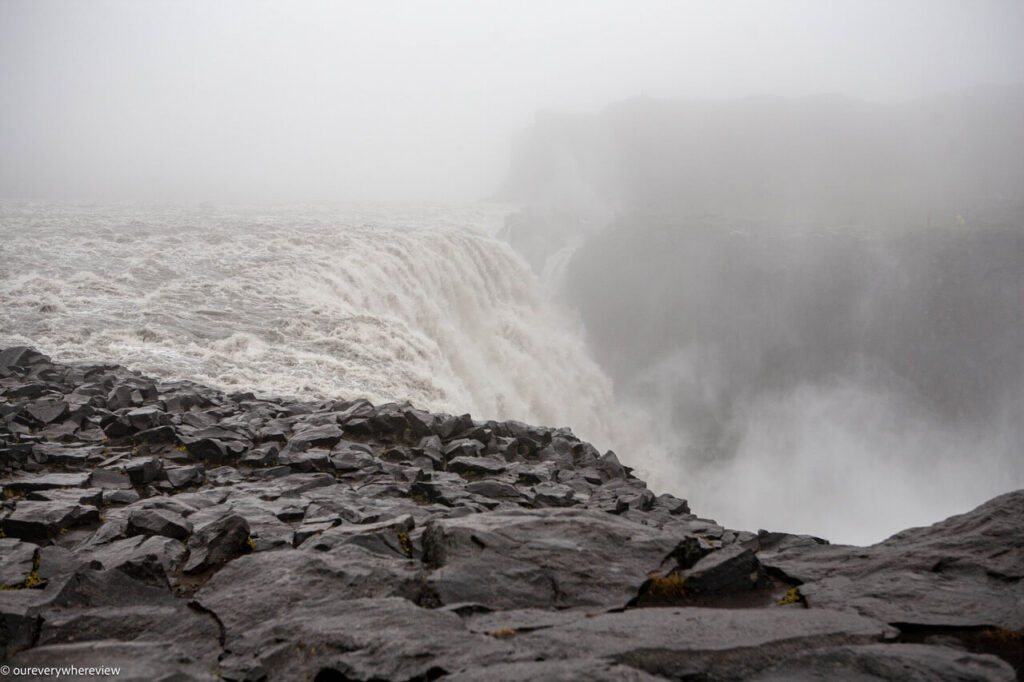
Selfoss is another waterfall that is about 10 minutes hike downstream. We skipped this, as visibility was really quite poor at this point.
Husavik
This small sub-arctic town is considered Iceland’s whale-watching capital. Many species of whale circle between the arctic circle and the bays around Husavik. It is a fishing town, with the harbour being Husavik’s centre of activity.
We arrived in time to have lunch at a cute little crepe cafe along the main street, and take a walk before our tour departure. Husavik’s most iconic building is it’s church, which stands sentry over the harbour. There is also a whale museum at one end of the harbour. Big S wanted to check this out, but it had started raining quite heavily again. (Being wet *really* impacts what you are motivated to do.)
Luckily, it stopped raining when we started the whale watching tour. There are a number of companies that operate whale watching tours out of Husavik. (The other spot to catch whales and take tours is around Reykjavik.) As far as we could tell, they all start from the same spot, and generally cross the bay to the same places. The whale watching tours are about 3 hours long, and provide warm coveralls and rain jackets. The tour operator guarantees you’ll see something, whether whales, porpoises, or dolphins. We booked with North Sailing, and it was 11000 Kr per adult (110 CAD). Kids are around half price, and free under the age of 7.
We didn’t see any whales, but did catch a pod of very playful dolphins. We had a marine biologist for our guide, who provided a lot of facts about the dolphins we saw, and the whales we did not see.
Our friends we traveled with were horribly seasick. The watery is choppy (even on a “calm” day), and all four kids were napping by the end of it.
Somehow, despite not having physically done much, we were all wiped out from the tour. That night, we chose the campsite right in the town, and all turned in early.
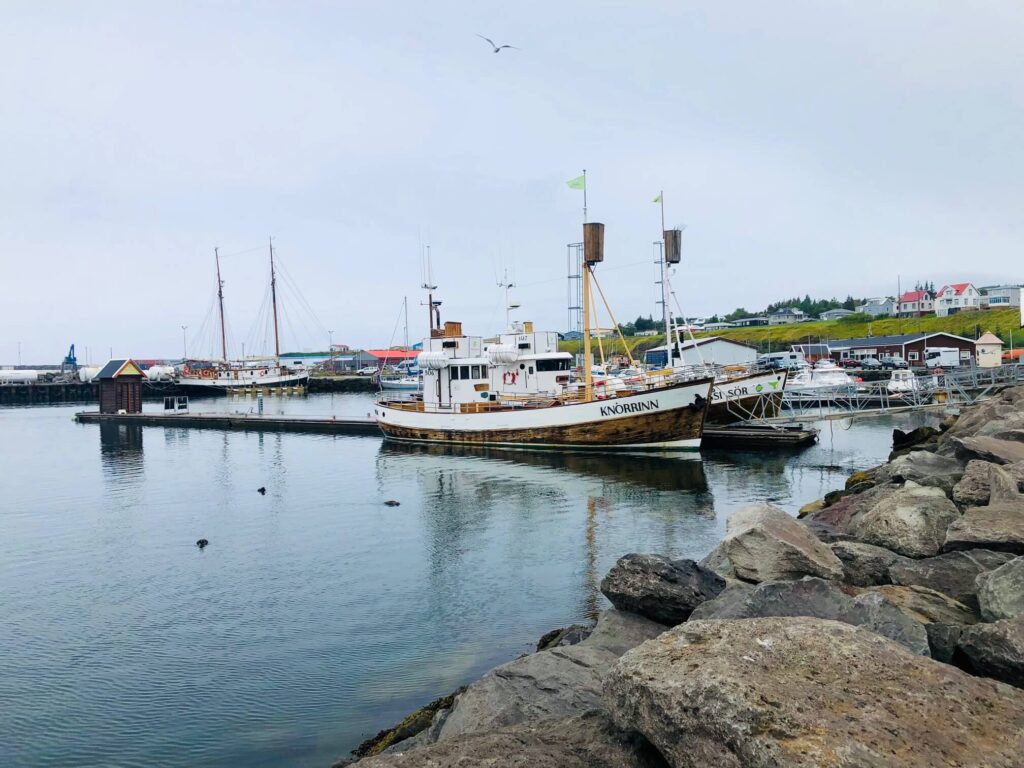
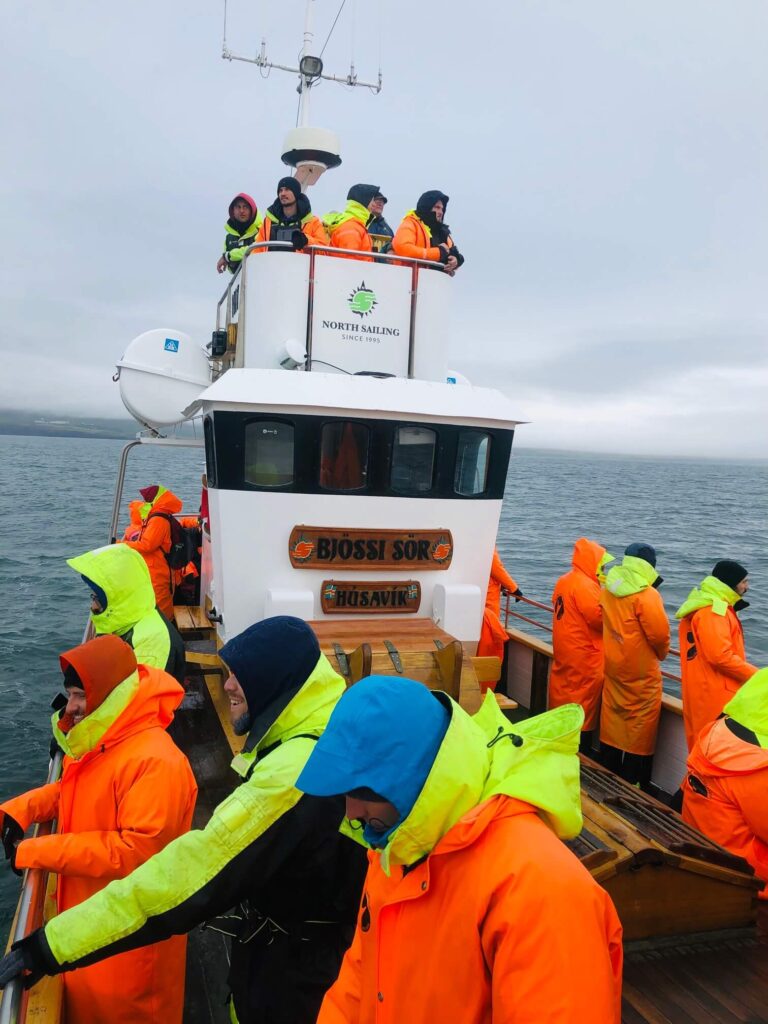
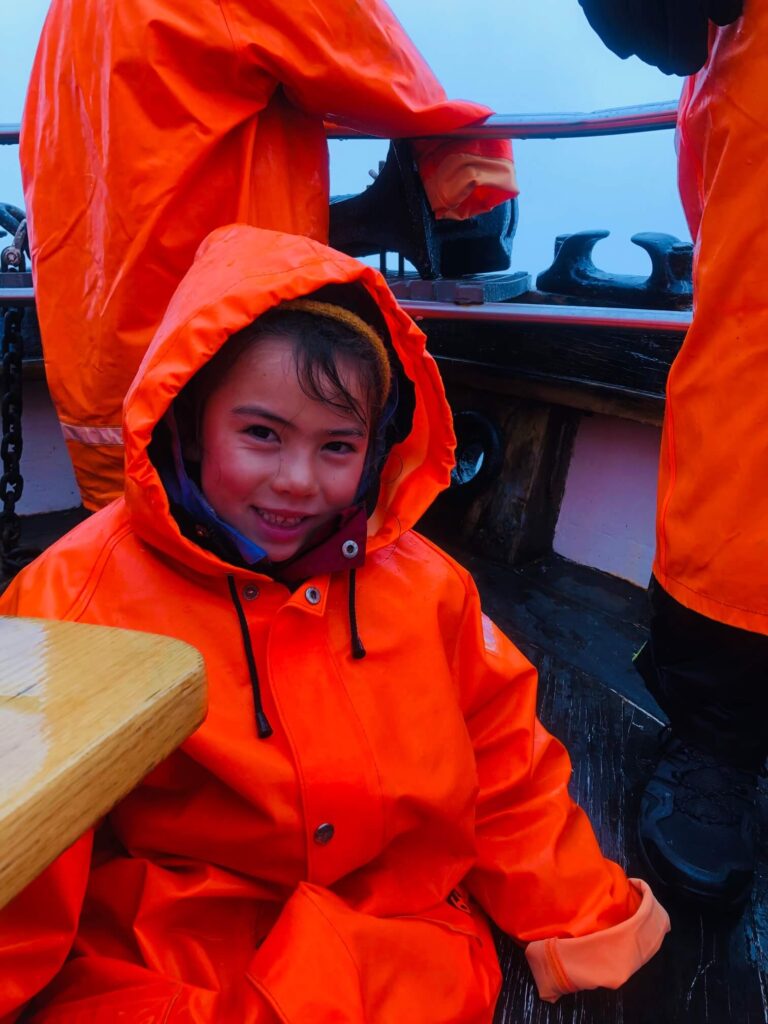
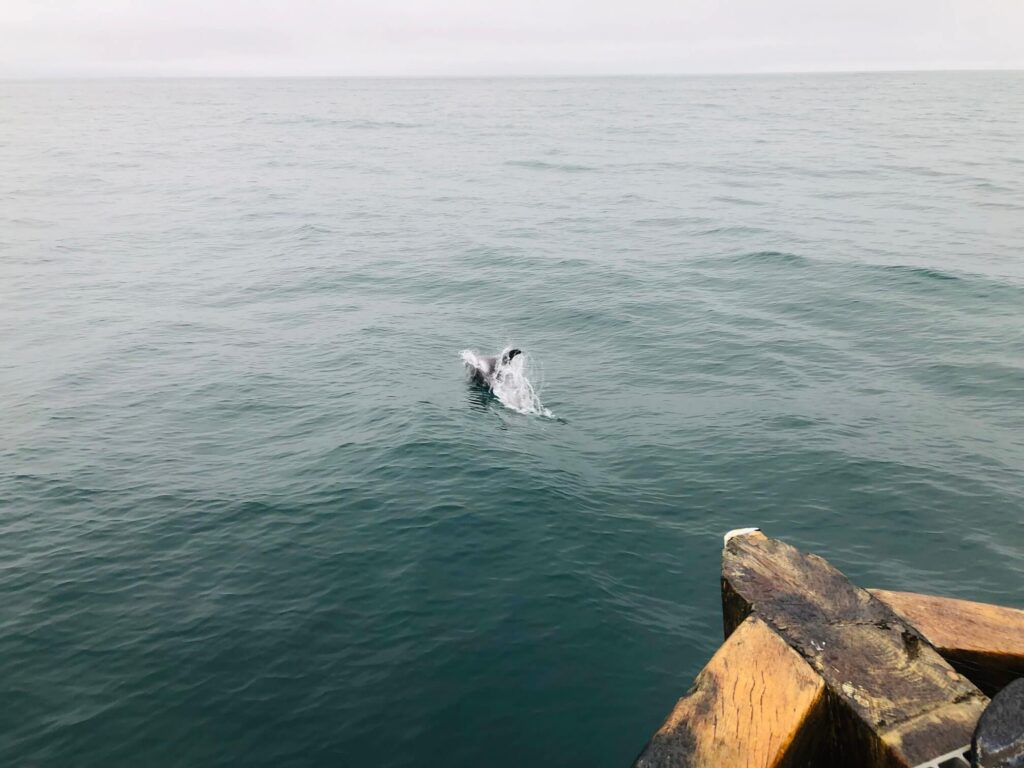
Day 8 – Lake Myvatn, “Diamond Circle”
I will always think of Iceland’s north as “the blistery north”, because we had the worst weather of our trip those few days. It was windy, wet, and cold.
Nonetheless, we gamely made our start toward Lake Myvatn (along route 87, so cutting across that Diamond Circle, really). There is only one small town here, Reykjahlio, with hotels and basic amenities, but the entire area around Lake Myvatn has a lot of geothermal activity and a number of interesting sites to see.
Dimmuborgir lava fields
These immense and dramatic lava fields were created by a volcanic explosion some 2000 odd years ago. There are a number of hiking trails here. We had all good intentions, but the weather was really not on our side that morning. It rained, and was so windy Lil S could hardly walk in a straight line.
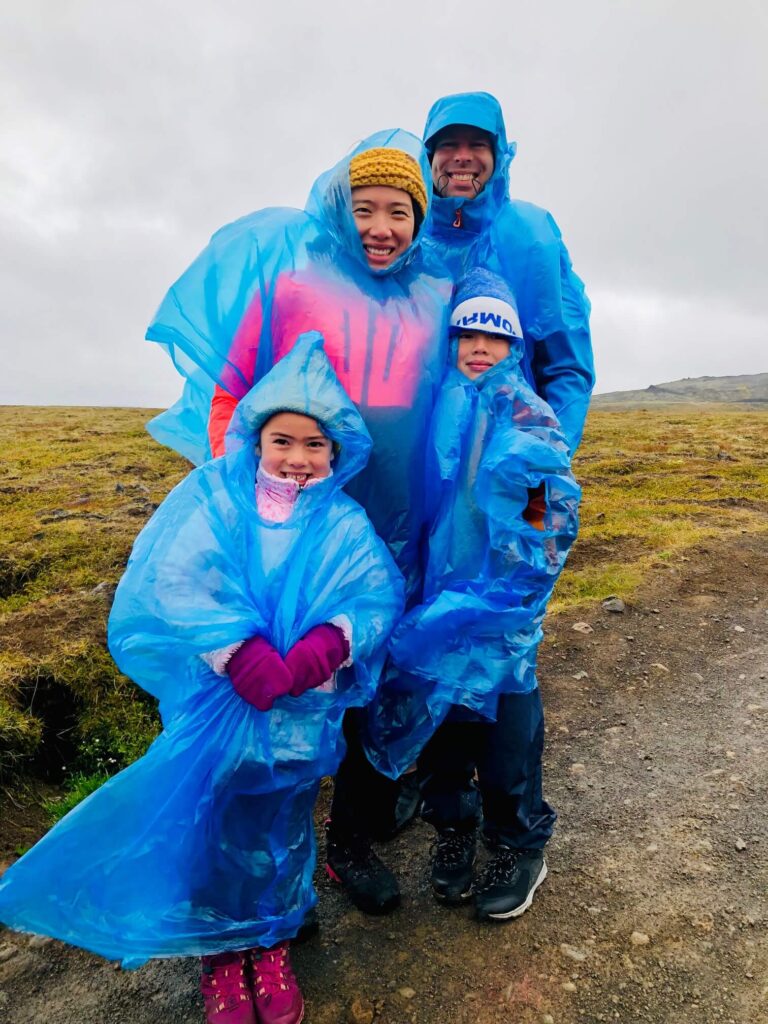
We had a little taste of it, but would have liked to explore more. An interesting thing about the fields is only one kind of moss grow on lava, so most lava fields are blanketed in this green moss. Icelanders are – rightly so – very protective about their moss. It takes 200 years to grow, and once damaged can take over a decade to grow back. We’d driven past a number of lava fields, and it was really cool getting to see it up close.
Up the road from Dimmuborgir (and possible to hike to from Dimmuborgir) is Hverfell crater. Like Kerid crater by the Golden Circle, you can hike around the caldera.
Namaskard Geothermal area
Namaskard is just off the road, and you can see the sulphurous steam rising up from the hot pots and vents from miles away.
We had already seen geothermal features at the Golden Circle’s Geysir, but this setting is completely different. The features are very active, steaming and bubbling away. The area is surrounded by bright red cliffs of clay. It feels wilder and more natural, and despite the weather was a great spot to explore.
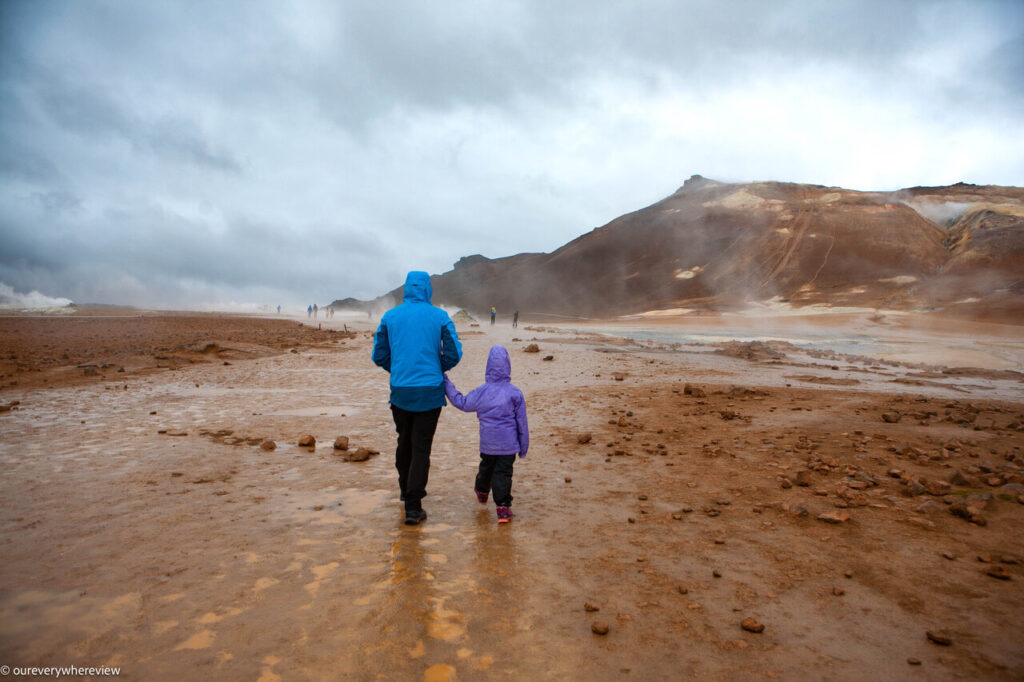
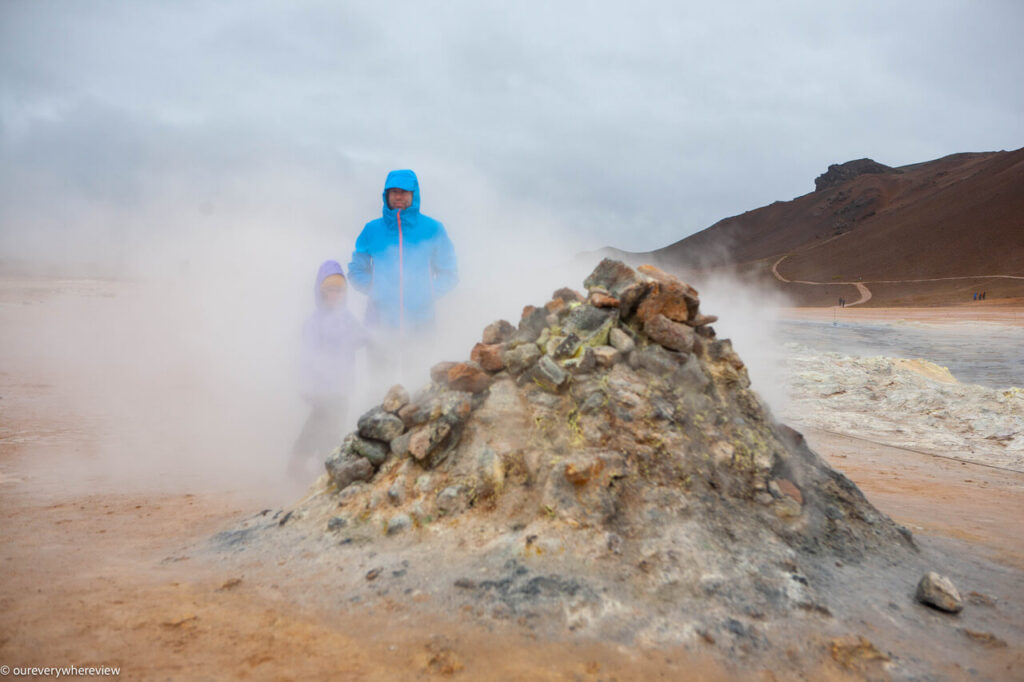
The other site we might have considered in this area is the Grjotagja hot spring cave, of Game of Thrones fame. We ended up skipping it, as the water is too hot now for swimming. Furthermore, we had heard it was not all that easy to navigate to the entrance (the kids have no patience for that!)
Lake Myvatn Nature Baths
Lake Myvatn nature baths is the northern equivalent of the Blue Lagoon. It was the perfect antidote to our chilly, rainy day.
We didn’t end up going to the Blue Lagoon, so we can’t directly compare the two, but Lake Myvatn is a little bit cheaper (5900 Kr to Blue Lagoon’s 7800 Kr, and kids are free at both places). It’s a bit smaller, but less crowded and quieter, as far fewer visitors venture up this way. You also don’t have to book ahead of time, whereas Blue Lagoon needs to be booked days in advance. (We booked the day before, but there were tons of same day spots open when we arrived.)
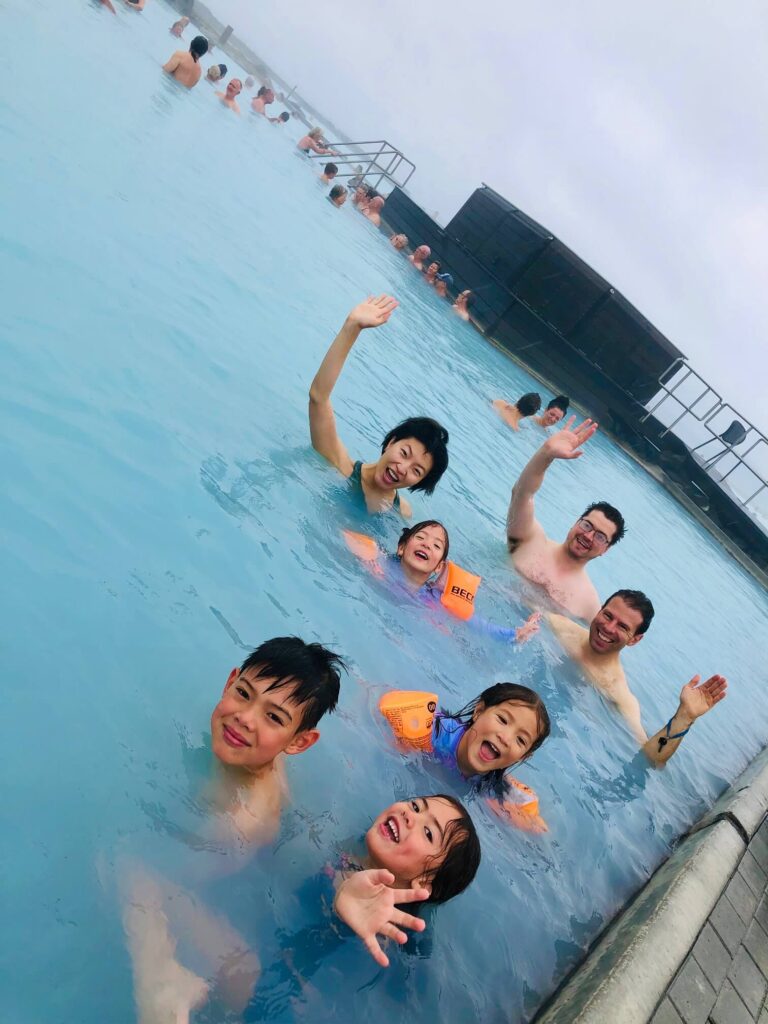
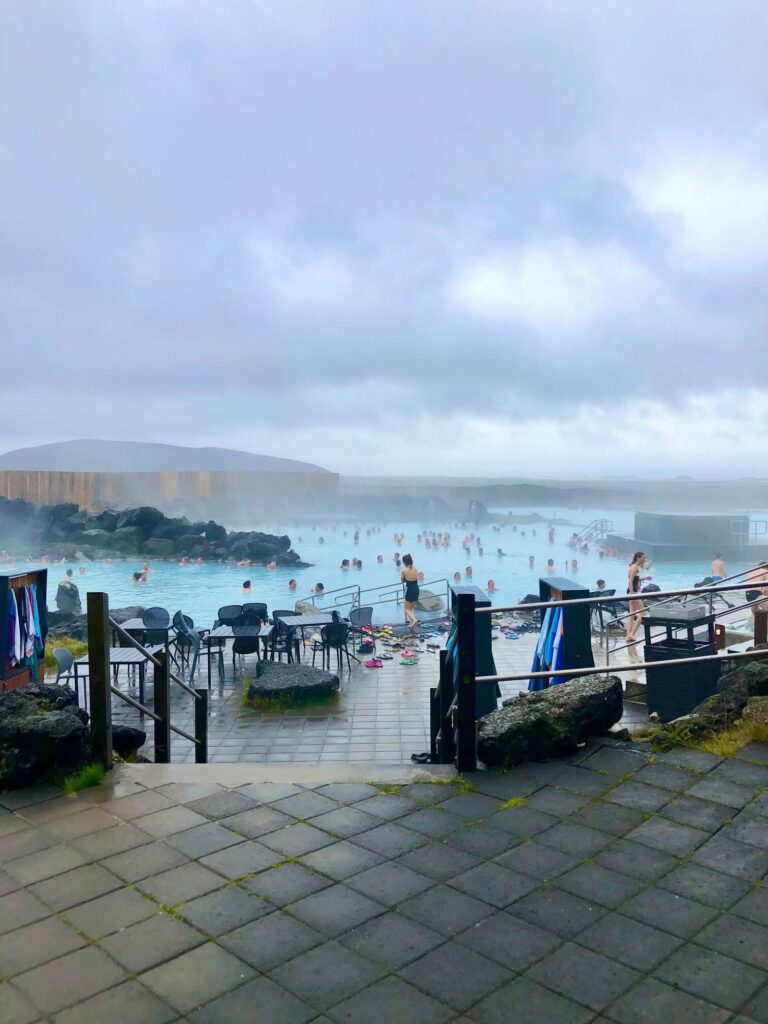
There are two main pools and one hot tub, as well as the sauna. The waters are a gorgeous blue due to the high silica content, and toasty warm even with the drizzle overhead. There is also a swim up bar. Floaties for children are provided.
We must have stayed the entire afternoon, and could have stayed longer. Hands down one of the highlights of our trip!
Godafoss
We rejoined the Ring Road and headed west, stopping by the last attraction that makes up the Diamond Circle – Godafoss, aka “waterfall of the Gods.” Legend has it that after lawspeaker Porgeir made Christianity Iceland’s religion around 1000 AD, he threw his pagan statues into Godafoss. Not certain there’s a whole lot of truth to that, but coincidentally, while it had been raining/overcast all day, the skies parted and the sun came out right over the falls as we were approaching it from the main road!
There’s a short hiking trail along both sides of Godafoss. Only Lil S accompanied us on this one, as the other kiddos were all asleep and Big S chose to read instead.
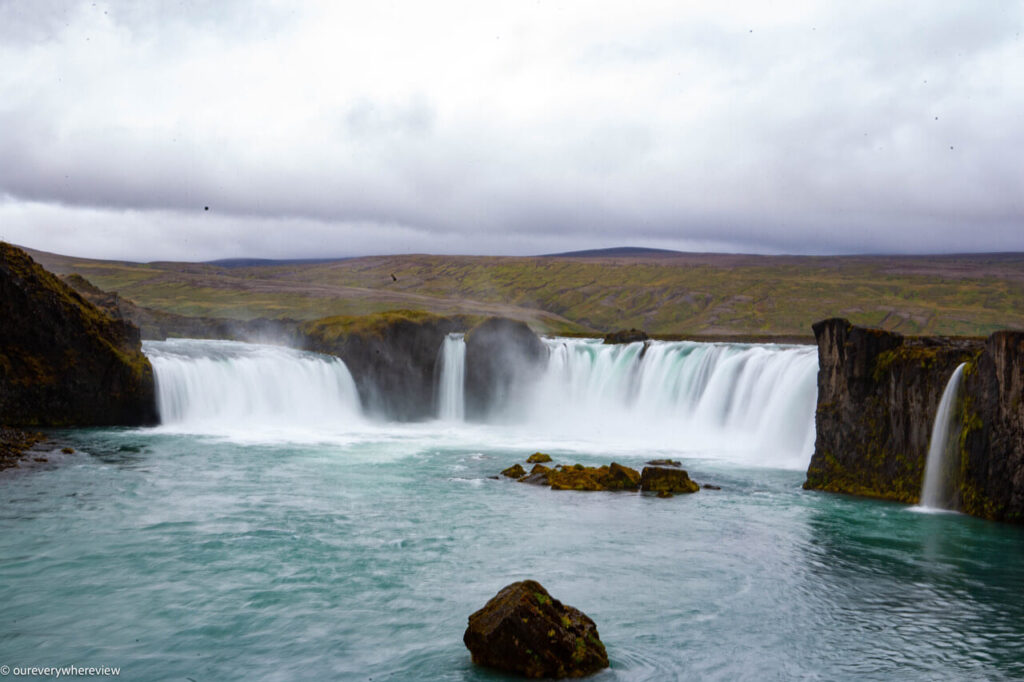
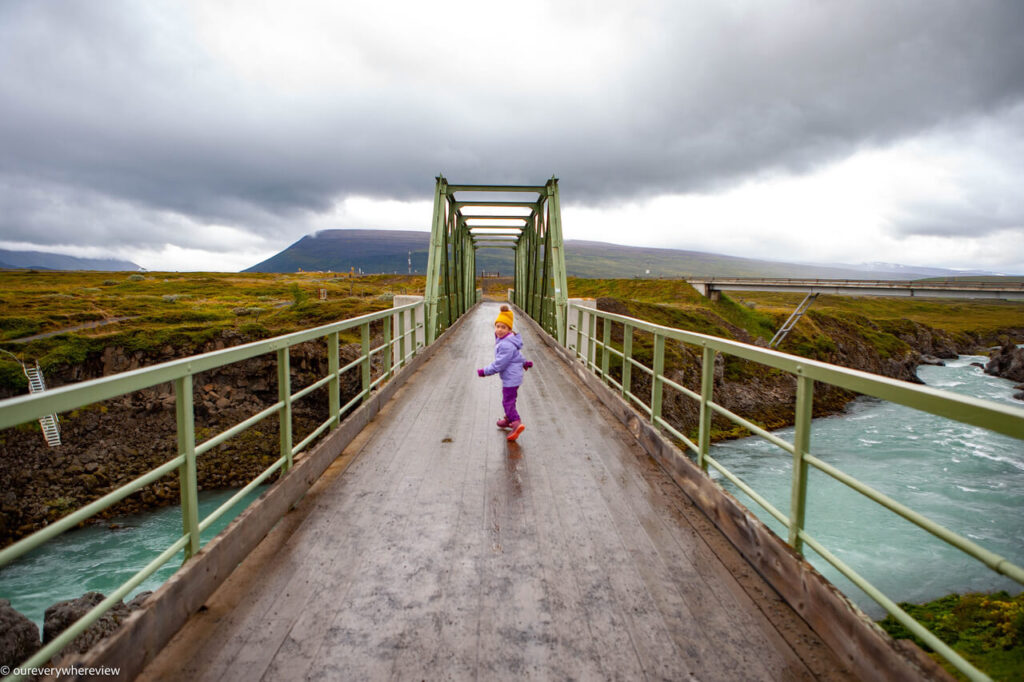
That night, we camped at Systragil, a small rustic campsite just outside the town of Akureyri. This site was in a valley, surrounded by trees (a rare find in Iceland), and was a great spot for the kids to unwind and play.
Day 9 – northwest Iceland
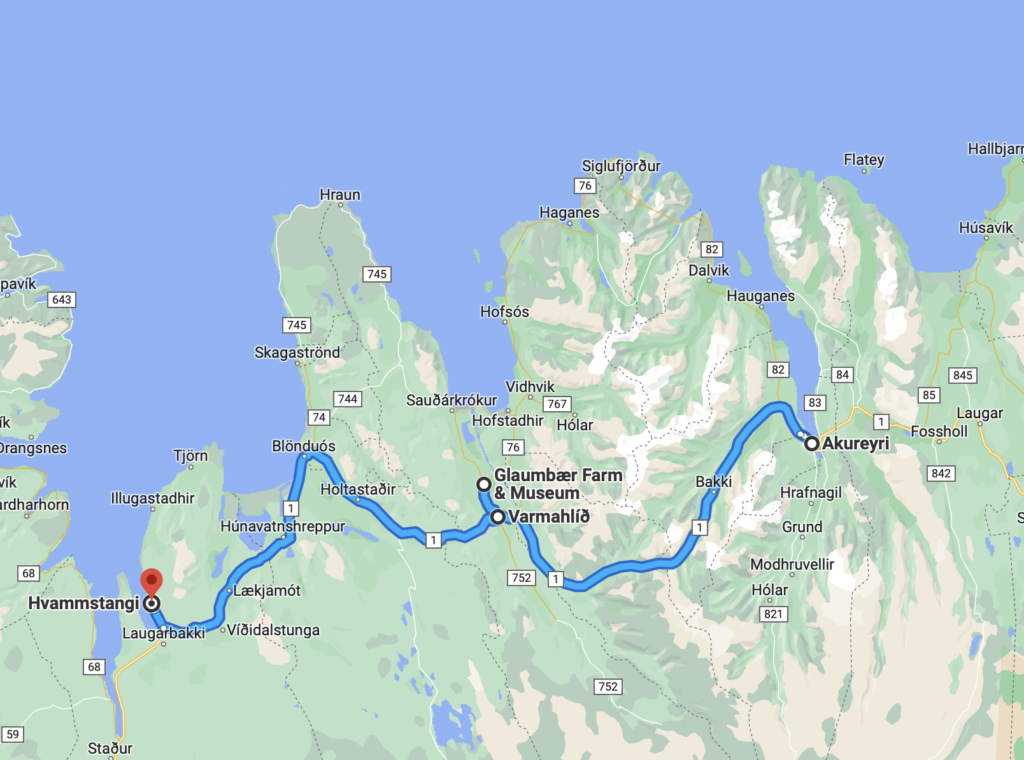
Continuing west toward the town of Akureyri, you can either pass through a tunnel and pay a fee (you can pay this fee online), or go the extra 15 minutes around it. (We did the latter, along a scenic coastal mountain road.)
We didn’t stop in Akureyri, but it is one of the larger towns in Iceland, and would be a good place to stop and stock up.
It’s a gorgeous drive along the Ring Road west of Akureyri, with rugged hills and snowcapped mountains, green fields and farms and small streams running through valleys. Very reminiscent of driving across Switzerland or Austria through the Alps.
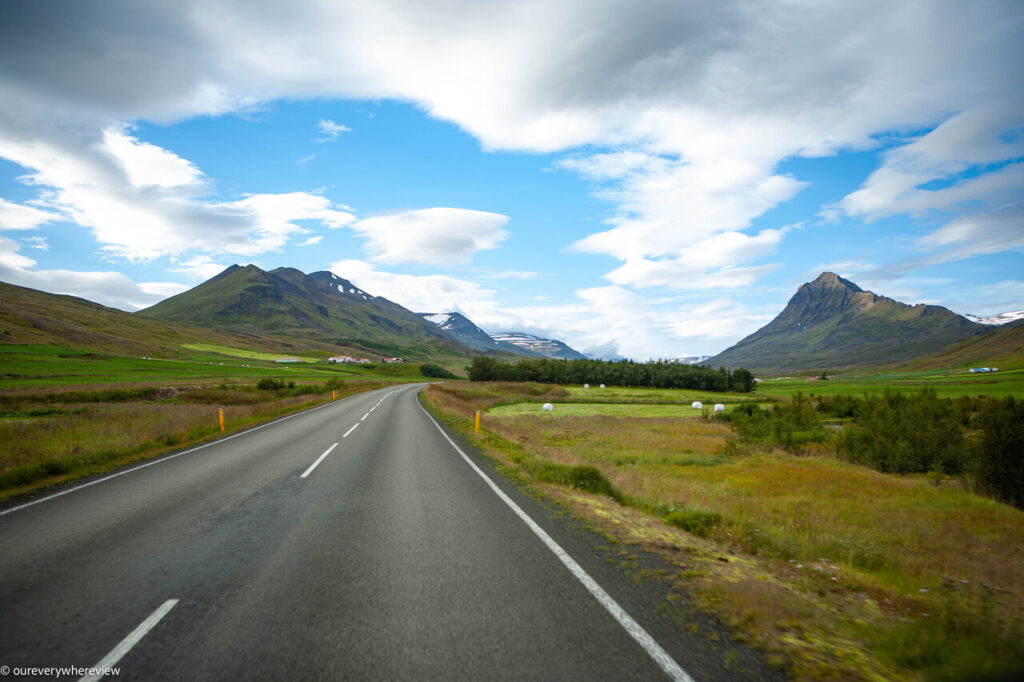
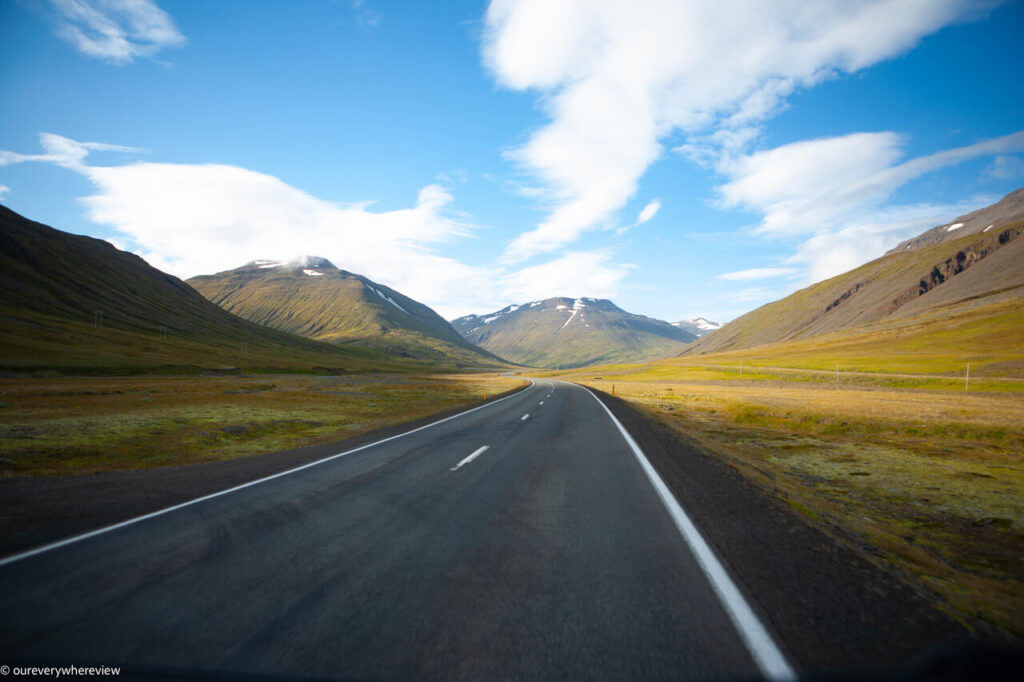
Horse-riding
This part of the country is renowned for its Icelandic horses, and is the best place to book a horse riding tour or a “meet the horses” experience. Icelandic horses have been the only horses bred in Iceland for a thousand years. No horses are allowed to enter the country in order to prevent the introduction of diseases. Icelandic horses are generally consider gentle and sturdy, and also have special gaits unique to the breed (as you can see, I’m clearly not a horse rider…)
There are many different options for tours, including multi-day tours generally reserved for experienced riders. The kids were too young for an actual tour (most tours will start around age 7), but we booked a “date an Icelandic horse” experience through Vestasport, near Varmahlid. We got to drive up to the farm, surrounded by gorgeous mountains, and the kids spent an hour brushing, riding, and feeding the horses. One of their favourite experiences in Iceland!
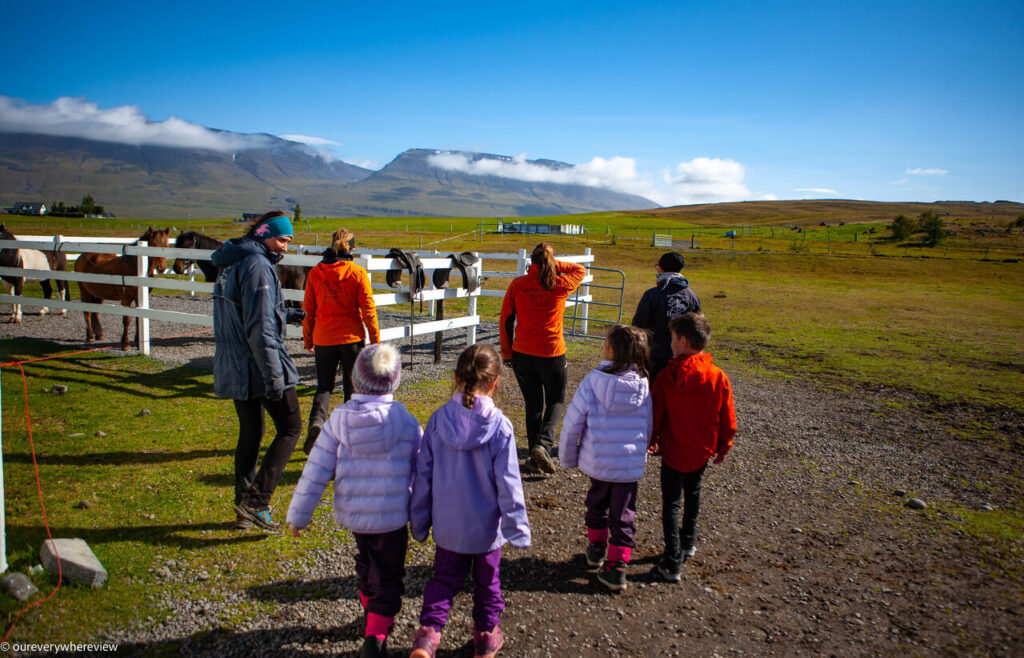
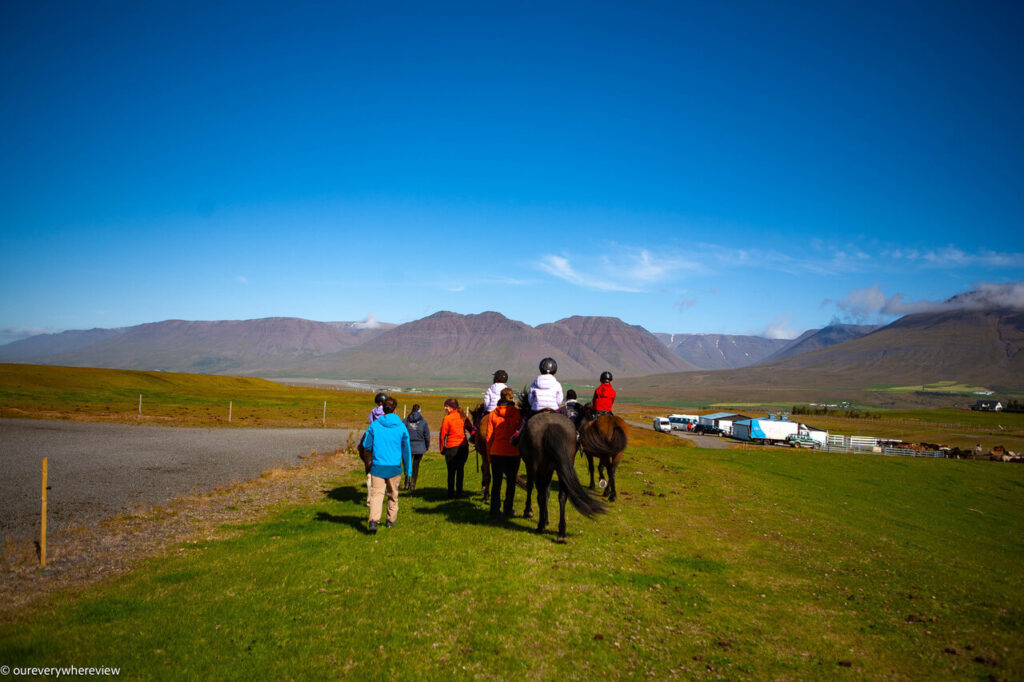
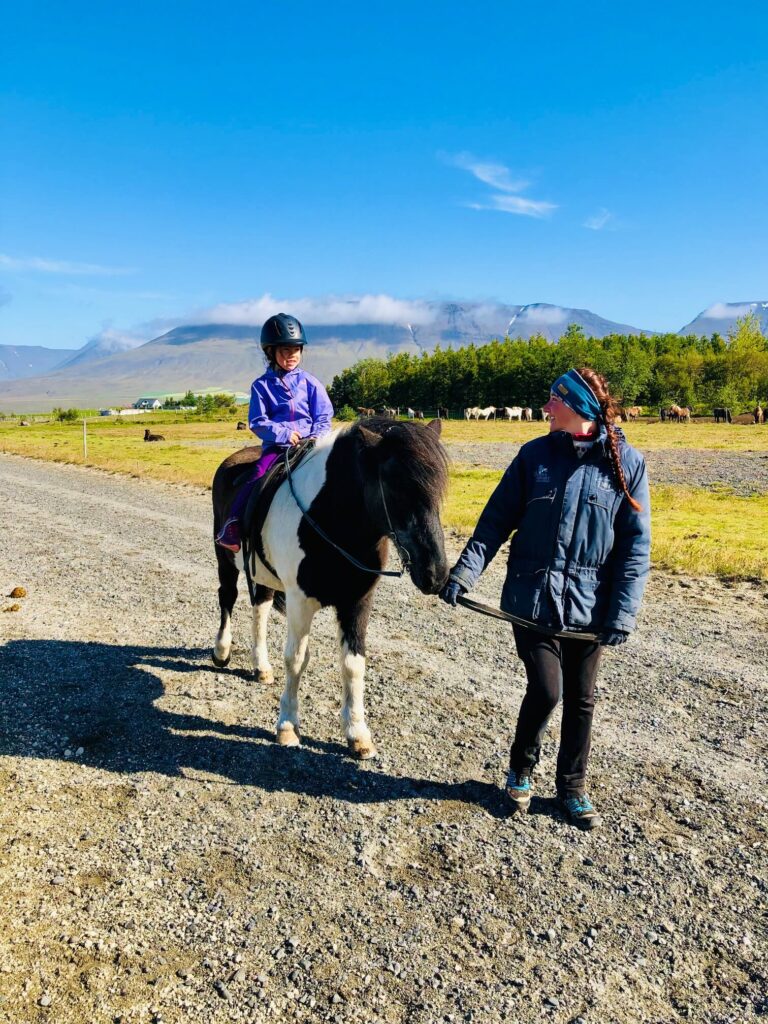
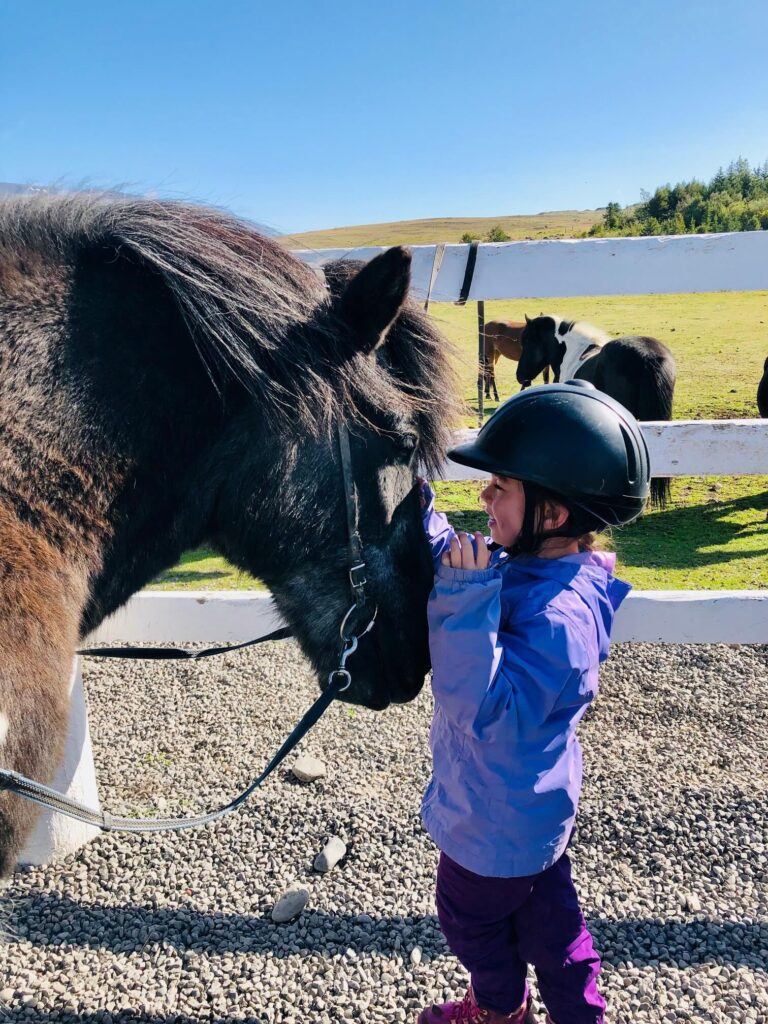
Glaumbaer Turf Houses
Just a short five minute drive up the road from Varmahlid is Glaumbaer, a museum showcasing traditional Iceland turf houses.
Glaumbaer is a farming complex, consisting of 13 houses built in the 1800s that were in use until 1947. A self-guided tour through the houses showcases how Icelanders lived in the 1800s and early 1900s.
It’s best to get here early (check the museum website for opening hours), as tour buses stop here throughout the day, and the small buildings can get quite crowded.
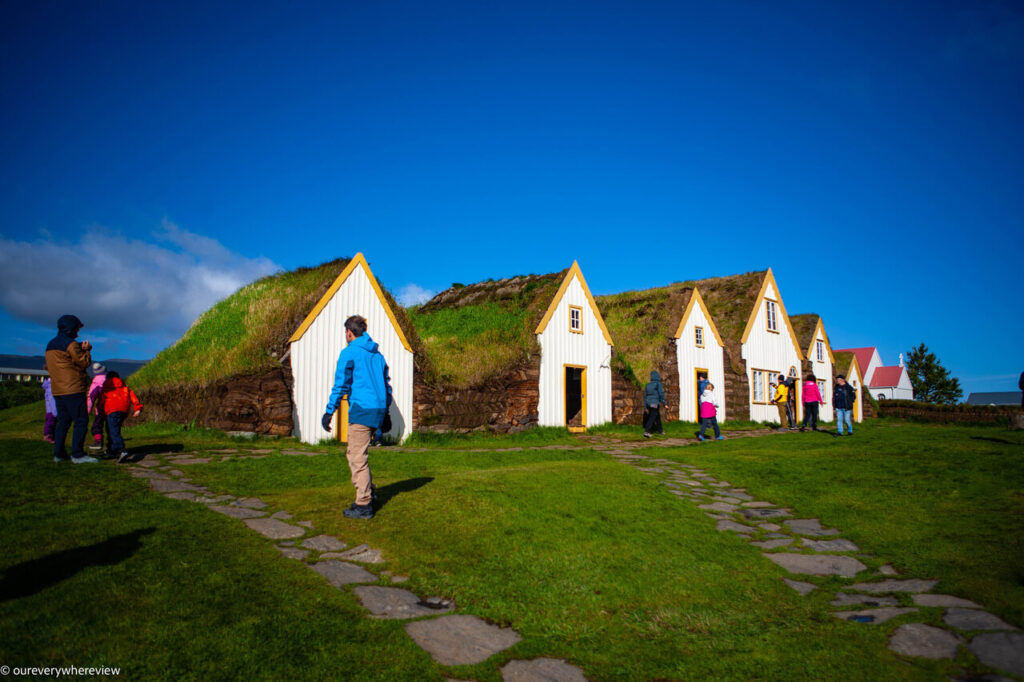
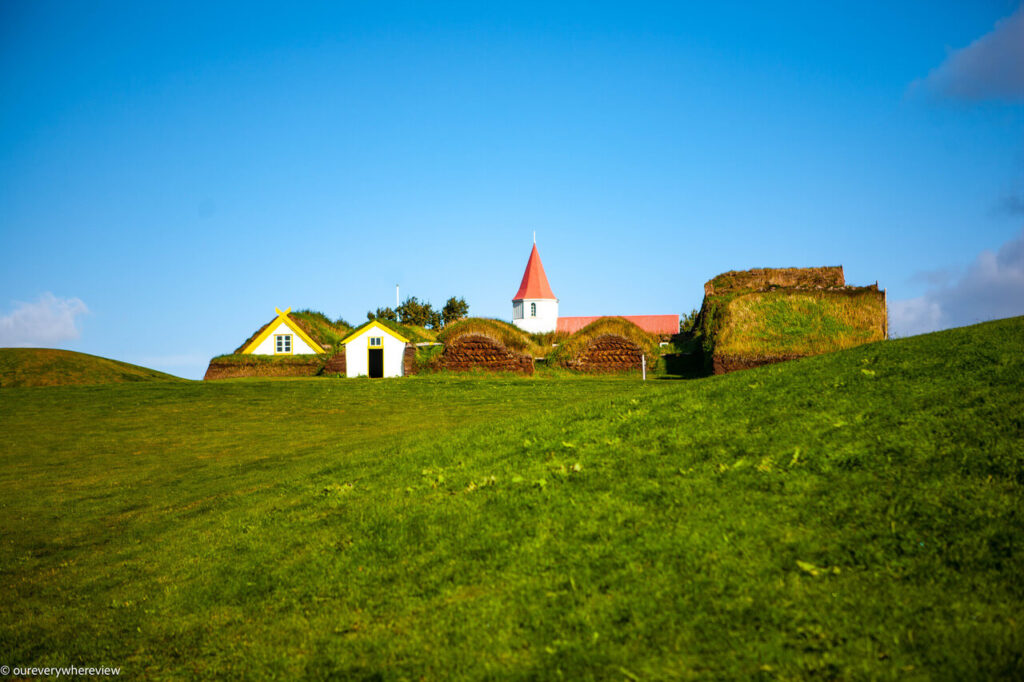
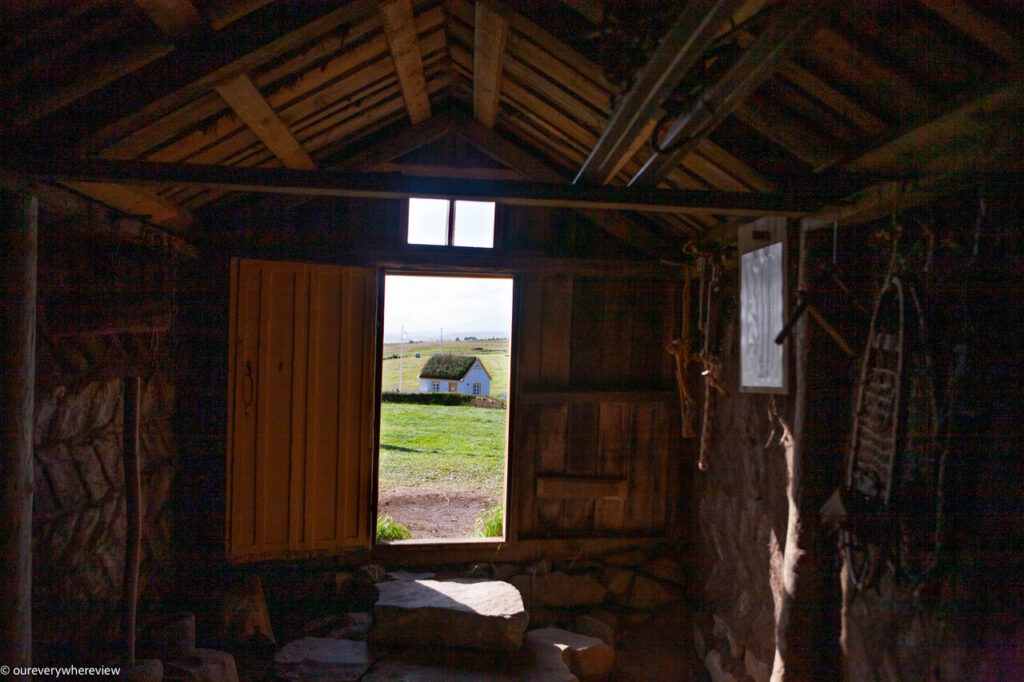
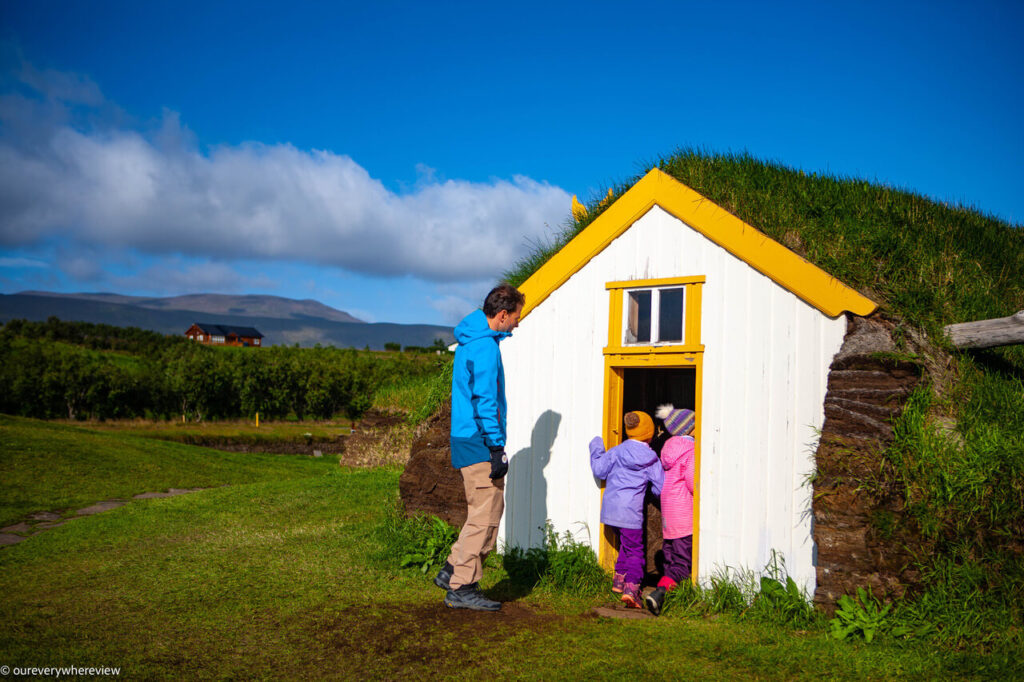
Hvammstrangi
We checked in early that afternoon in Hvammstrangi, a small coastal town on the Vatnsnes peninsula at about the halfway point between Akureyri and Reykjavik.
This area is home to the biggest seal colony in Iceland. There is a seal museum in Hvammstrangi, and the staff can provide directions on the best places to spot seals at certain times of the day along the Vatnsnes peninsula.
We had done a lot of driving in the last few days, and opted for a low-key evening at the campsite. There is also a really great pool nearby, with wicked waterslides. The campsite has a great view overlooking the fjord, and a lot of open space for the kids to play. It has, not one, but TWO playgrounds, and a small stream for the kids’ favourite pastime – rock throwing. We were able to unwind while the kids played, bringing out our picnic set to enjoy some classic Icelandic hot dogs!
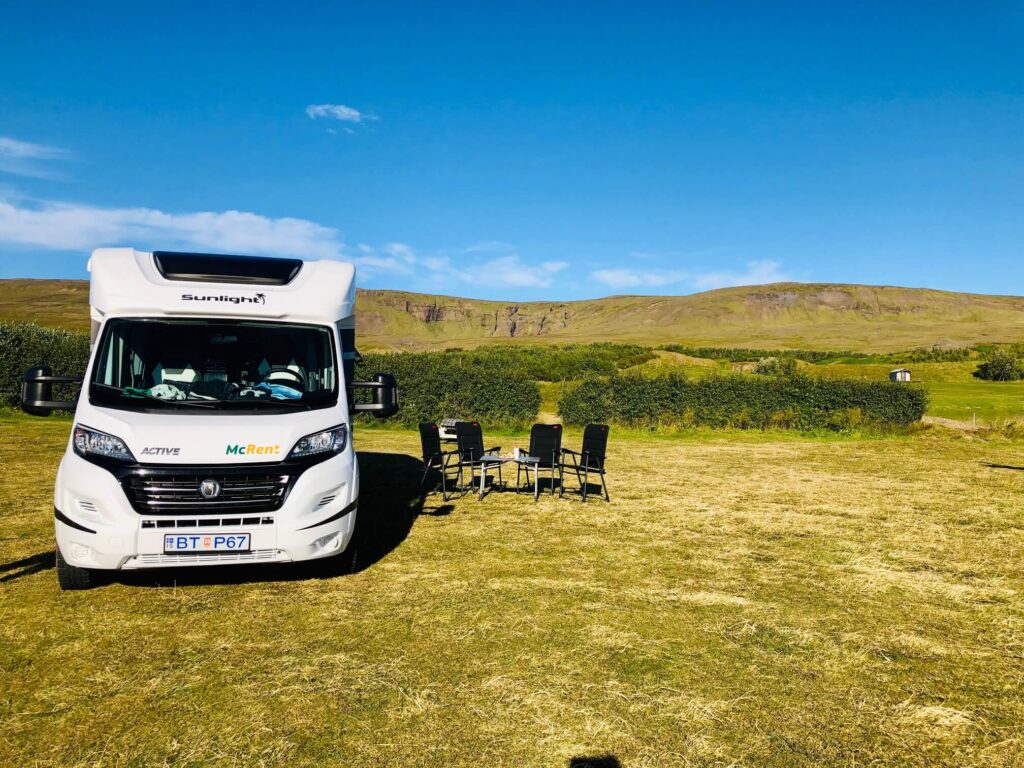
Be sure to check out the last leg of our Icelandic adventure here!
